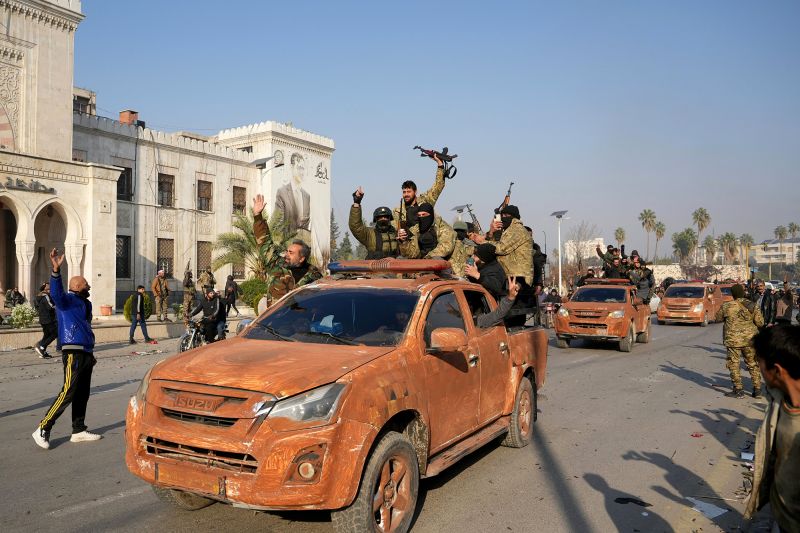Hundreds of people appear to have fled the central Syrian city of Homs overnight into Friday, as anti-regime rebels push further south on the road to the capital Damascus.
Videos from overnight into Friday showed hundreds of vehicles lining the highway out of Homs, as the city braces for violence that may come during clashes between the rebels and the regime.
After capturing the city of Hama to the north on Thursday, the rebels set their sights on the crossroads city of Homs which, if captured, would split the territories under the control of President Bashar al-Assad in two.
“Our heroic people in Homs, your time has come,” a spokesperson for the rebels said on Thursday.
“When we talk about objectives, the goal of the revolution remains the overthrow of this regime. It is our right to use all available means to achieve that goal,” said Jolani.
Homs has a sizeable population of Alawites, co-religionists of Assad, many of whom fear retribution from Islamist militants who accuse Alawites of dominating the country and supporting Assad’s quashing of the rebellion.
After bursting out of their pocket of territory in the northwest region of Idlib, the rebels captured the Aleppo within three days and Hama within eight, meeting minimal resistance from regime forces which were caught flat-footed by the lightning offensive.
It is not clear whether regime forces will be able to defend the city of Homs, about an hour’s drive south of Hama. If the rebels next capture Homs, this would mean they have effectively spliced the Assad regime into two pockets: one along the coast and the other in Damascus.
“Guys, my country is being liberated. I swear to God, we are inside Hama city, we are inside Aleppo city,” a fighter cheered as he filmed himself by Alaarbaen Roundabout in Hama.
The rebels, led by the Islamist group Hayat Tahrir al-Sham (HTS), said they freed hundreds of those “wrongfully detained” from Hama’s central prison. The city was the site of one of Syria’s largest massacres in 1982, when President Hafez al-Assad – the current ruler’s father – ordered his military to quash a revolt.
Although the prospect of the rapid collapse of the Assad regime was scarcely conceivable just over a week ago, Jolani said: “The seeds of the regime’s defeat have always been within it… the Iranians attempted to revive the regime, buying it time, and later the Russians also tried to prop it up. But the truth remains: this regime is dead.”
The offensive has reawakened a civil war that had been largely dormant for years. The conflict began in 2011, after Assad moved to stamp out peaceful pro-democracy protests during the Arab Spring. The fighting swelled as other regional actors and world powers – from Saudi Arabia and the United States to Iran and Russia – piled in, escalating the civil war into what some observers described as a “proxy war.”
More than 300,000 civilians have been killed in more than a decade of war, according to the United Nations, with millions more displaced across the region.

